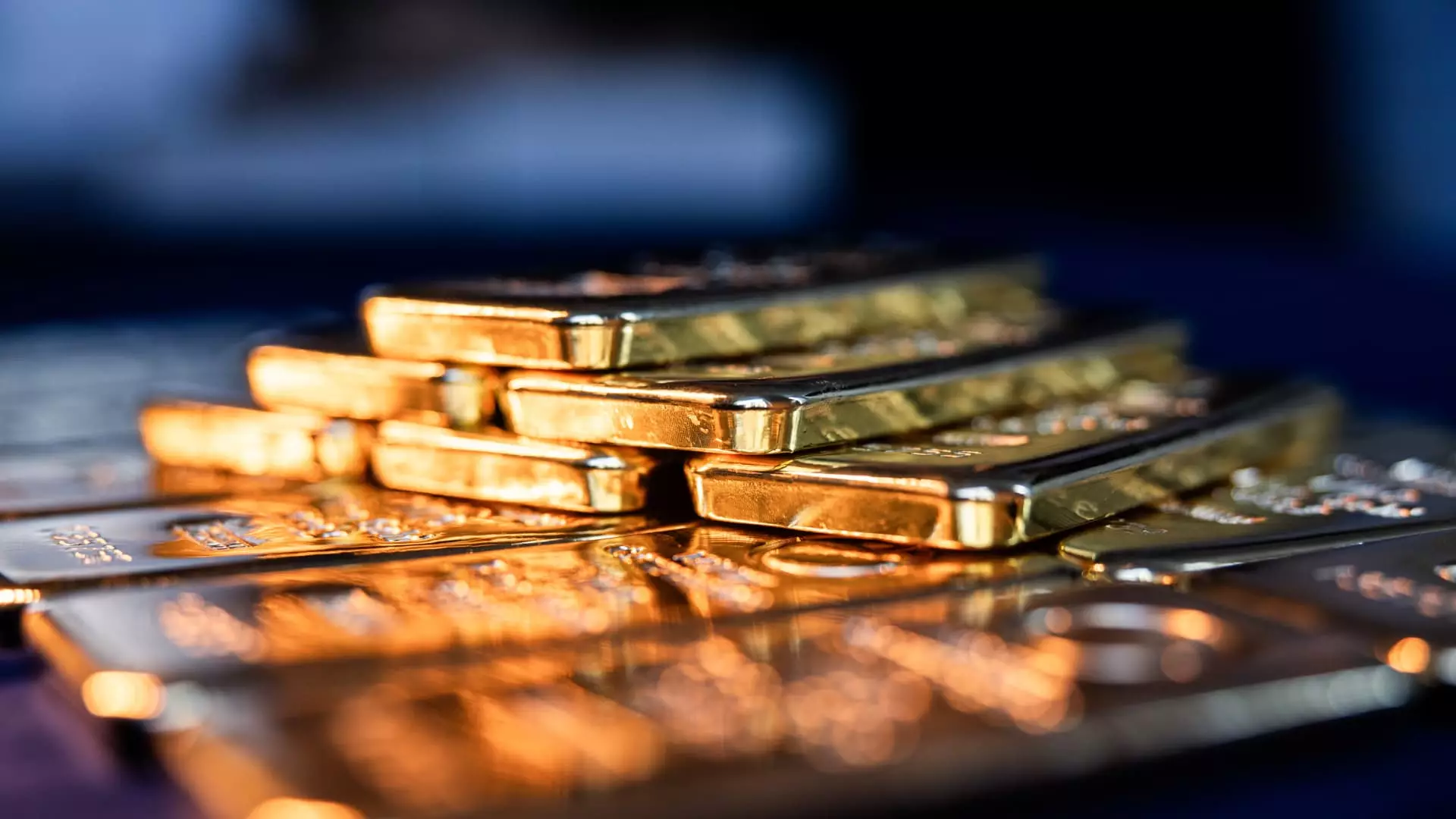Gold has long been hailed as a safe-haven asset, promising security and stability in turbulent financial times. Its dazzling allure often creates a false sense of invulnerability. Currently, gold prices are soaring to unprecedented heights, fueled by fears of a looming recession and escalating global trade tensions. However, investors must question whether this rise is sustainable or simply a mirage—a brief spike that will ultimately lead to disappointment for those who jump in too late.
Gold has achieved remarkable records this year, climbing to prices above $3,000 per ounce, up over 21% from the beginning of the year and 30% from a year ago. While these figures are undoubtedly impressive, one cannot help but wonder if they represent a peak rather than a launchpad for further growth. Market analysts like Sameer Samana from Wells Fargo caution that we might be reaching “maximum optimism” for gold. Chase after returns in an overheated market, and you may find yourself nursing regret as the bubble bursts. It’s essential to approach this shiny metal with caution, as the allure of gold can often overshadow sound financial judgment.
The Global Trade War’s Impact on Prices
The financial landscape is further complicated by the recent trade tensions between the U.S. and China, creating a perfect storm for gold’s ascent. Each nation’s tit-for-tat tariff strategies have stoked fears of economic instability. While it’s reasonable to expect that gold typically performs well during periods of heightened anxiety, it is insightful to recognize that it often lags during recessions, when financial instruments like bonds become the stars of the show.
Whether or not there is room for gold prices to climb even higher remains a divisive topic among experts. Some, like Jordan Roy-Byrne, argue that the current highs could just be the beginning of an acceleration. Yet, this optimistic viewpoint should be met with skepticism. With the U.S. imposing a staggering 145% tariff on imports from China, the implications for both domestic and global markets are profound. Investors should tread carefully, as the adage “what goes up must come down” often proves true, particularly in hasty investment environments.
ETFs vs. Physical Gold: A Battle for Dominance?
The investment community is divided over the best way to incorporate gold into a diversified portfolio. While some advocate for gold exchange-traded funds (ETFs) that track physical gold prices—like SPDR Gold Shares and iShares Gold Trust—others favor the tangible nature of owning physical gold. The convenience of ETFs is appealing; they provide exposure to gold liquidity without the headaches of storage and insurance associated with actual bullion.
However, physical gold proponents argue that there’s something inherently reassuring about possessing a tangible asset, especially in times of severe market volatility. Analysts note a resurgence in interest for physical gold, exemplified by sales at retailers like Costco, where gold bars flew off the shelves. Yet, one must cautiously weigh the emotional satisfaction of holding gold against its practical implications. Is investing in physical gold a sound financial strategy, or merely an emotional crutch during turbulent times?
Jewelry: An Investment or Emotional Sunset?
While gold coins and bars are often viewed strictly through a financial lens, gold jewelry introduces a fascinating intersection of aesthetic value and potential investment wisdom. High-quality pieces from renowned brands can appreciate in value over time, intertwining personal enjoyment with financial acumen. Yet, the question remains—should we categorize jewelry as a financial asset or personal indulgence?
Consumers often cherish fine jewelry as both a decorative accessory and a financial hedge against uncertainty. Still, the line between a sound investment and an emotional purchase can blur. The craftsmanship involved in creating unique pieces undoubtedly elevates their worth, but one must ask—do these factors equate to long-lasting stability, or are they just fleeting trends in an unpredictable market?
The Psychological Allure of Gold
Lastly, it’s crucial to address the psychological dimensions that compel investors to flock to gold during turbulent times. The concept of “flight to safety” has never been more relevant. In chaotic financial conditions, it’s human nature to gravitate towards what is perceived as secure. Those with substantial assets diversify into gold to maintain balance and flexibility. Still, some financial advisors prefer to emphasize caution and recommend strategies that involve higher cash reserves and proactive portfolio reallocations rather than lavish spending on gold at inflated prices.
Gold may emit a comforting glow for those looking to shield their assets, yet it’s essential to remember that perceived security can often be misleading. The euphoria surrounding gold investments today could very well turn sour if investors do not remain vigilant and discerning. The transformative potential of gold lies not solely in its shiny exterior but also in our understanding of when and how we engage with it as a financial asset.

